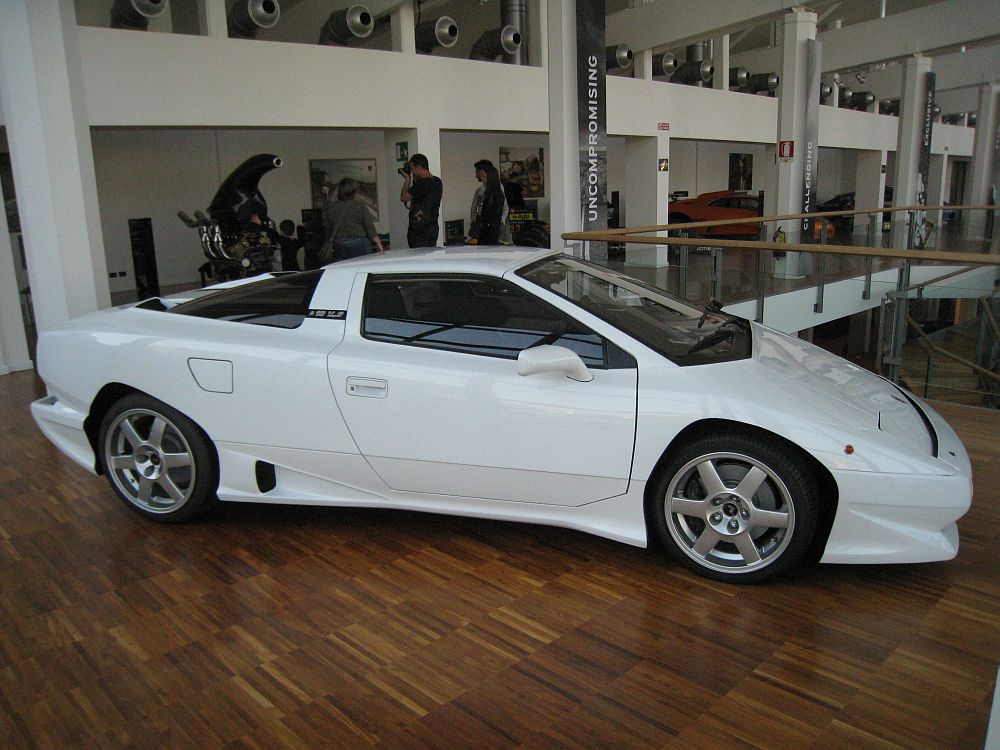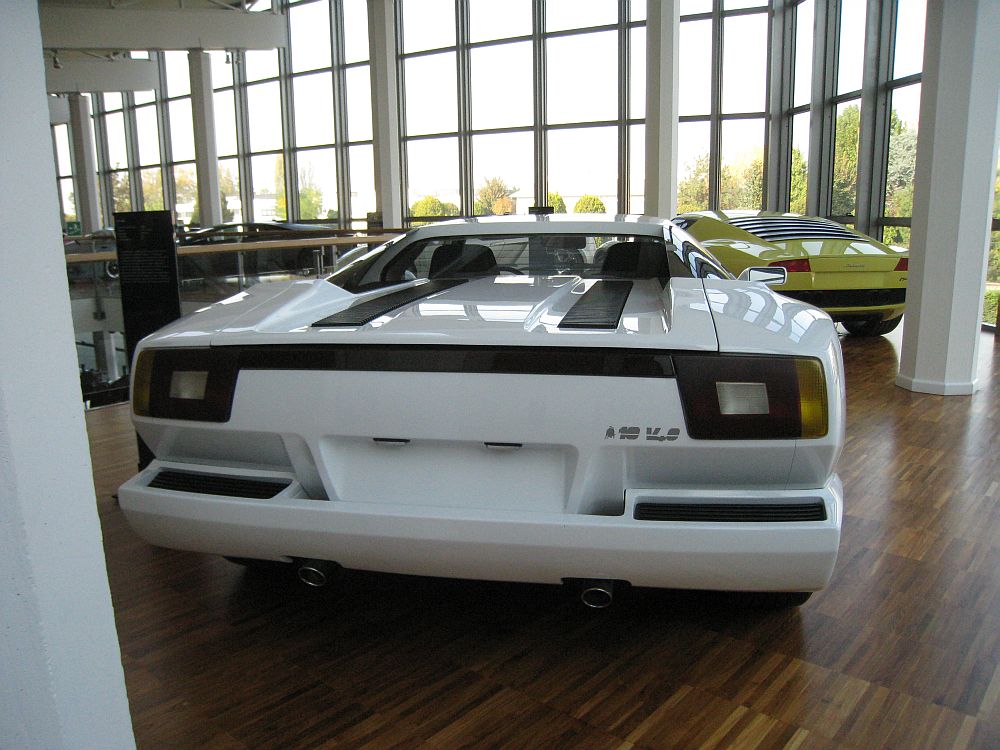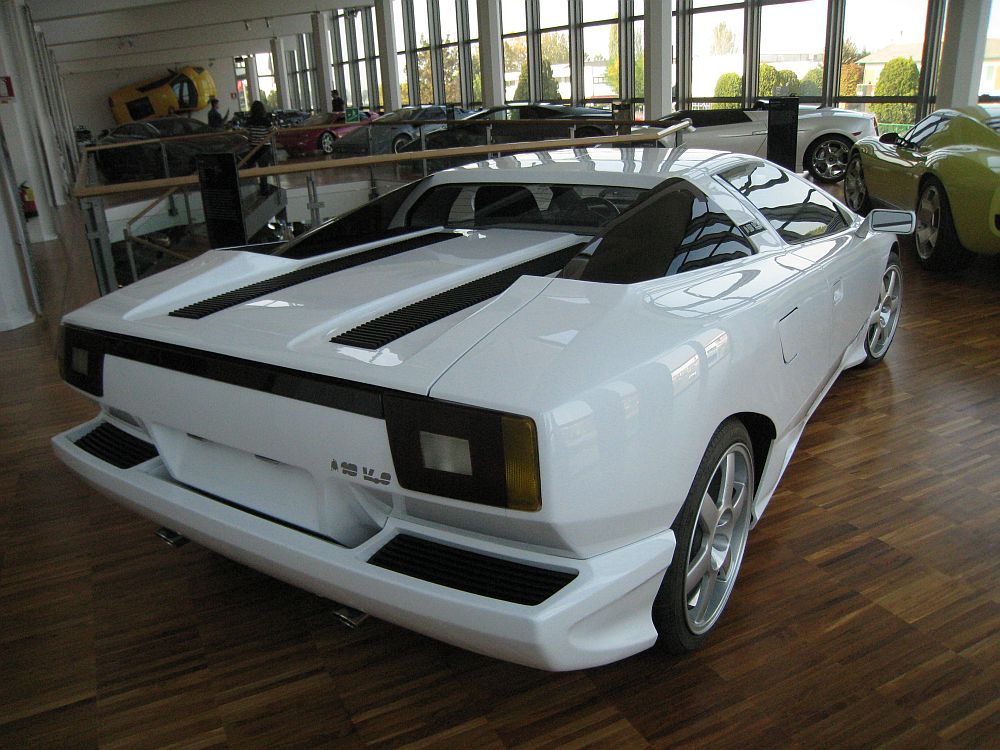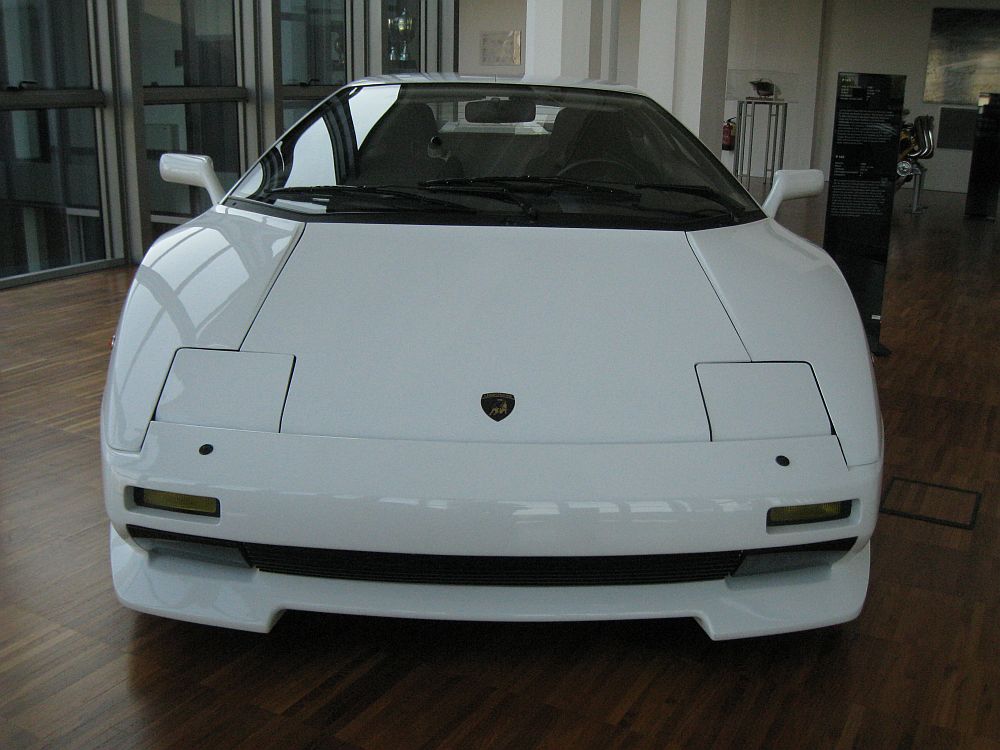Description
The Lamborghini P140 was a bold and forward-thinking prototype developed in the late 1980s as a potential successor to the Jalpa—a compact, more accessible sports car that could complement Lamborghini’s flagship Diablo. Conceived during a period of transition and experimentation, the P140 was meant to bring Lamborghini’s exotic performance to a wider audience while showcasing a new generation of engineering and design. Though it never reached production, the P140 remains one of the most intriguing “what if” stories in Lamborghini’s history—a glimpse of the brand’s future that was never realized.
Development of the P140 began around 1988, when Lamborghini was under Chrysler’s ownership and actively rethinking its model strategy. The Jalpa, Lamborghini’s entry-level model introduced in the early 1980s, was nearing the end of its production run, leaving a gap below the newly launched Diablo. The P140 project was created to fill that void: a smaller, lighter, and more affordable Lamborghini that retained the company’s trademark mid-engine layout and Italian flair, but with modernized engineering and usability. The internal codename “P140” followed the numbering convention of Lamborghini’s development projects, linking it conceptually to the Diablo’s “P132.”
The design of the P140 was entrusted to Marcello Gandini, who had already shaped Lamborghini’s identity with the Miura, Countach, and Diablo. His approach for the P140 blended the sharp, wedge-based lines typical of 1980s Lamborghini design with smoother, more aerodynamic forms that hinted at the styling evolution of the 1990s. The result was a car that appeared compact yet purposeful, with short overhangs, a wide stance, and crisp contours that reflected Gandini’s obsession with balance and proportion. The body featured pop-up headlights, deep air intakes ahead of the rear wheels, and a low-slung profile that exuded both agility and aggression.
Unlike the V12-powered Diablos and Countachs, the P140 was designed around a new 4.0-litre V10 engine—Lamborghini’s first-ever ten-cylinder. This engine was a landmark development for the company, representing its effort to diversify beyond the traditional V12 layout while retaining high performance. The naturally aspirated V10 produced around 370 horsepower at 7,200 rpm, which, combined with the car’s lightweight construction, promised exceptional performance. Early estimates suggested that the P140 could accelerate from 0 to 100 km/h (62 mph) in under five seconds and reach a top speed close to 290 km/h (180 mph), making it one of the fastest mid-sized sports cars of its time.
The chassis was constructed from a combination of tubular steel and composite materials, emphasizing rigidity and weight reduction. The suspension featured double wishbones and coil-over dampers at all four corners, tuned for sharp, responsive handling. Power was delivered to the rear wheels through a five-speed manual gearbox. Lamborghini’s engineers aimed to make the P140 easier to drive than the Diablo—more forgiving at low speeds, yet still thrilling at the limit. It was intended as a car that could appeal to those who wanted the Lamborghini experience without the intimidating extremes of a full-size V12 supercar.
Inside, the P140’s cabin was designed with the same mix of luxury and purpose that characterized Lamborghini’s ethos at the time. The cockpit was driver-centric, featuring deeply bolstered seats, a straightforward instrument cluster, and a prominent center console housing the gated shifter. The use of high-quality leather, polished aluminium, and simple geometric lines reflected both Gandini’s minimalist design philosophy and the growing emphasis on ergonomics and comfort in late-1980s sports cars.
Three prototypes of the P140 were built between 1988 and 1991, each refining different aspects of the design and engineering. The first was a rolling chassis used for mechanical testing, while the second and third featured fully developed bodywork and interiors. These prototypes underwent limited road testing, confirming the car’s potential as a dynamic and well-balanced machine. However, as development progressed, Lamborghini’s financial situation once again became unstable, and Chrysler’s management grew hesitant about investing in a second production line for a new model.
By 1991, the P140 project was officially shelved, largely due to economic pressures and the company’s focus on stabilizing the Diablo’s production. Yet, the ideas and technology developed for the P140 would not be wasted. The 4.0-litre V10 engine served as the conceptual foundation for future Lamborghini V10 powerplants, eventually finding new life decades later in the Gallardo and Huracán. In this way, the P140 can be seen as the spiritual ancestor of those later models—cars that finally realized the dream of a “smaller” Lamborghini.
In design terms, the P140 also marked a turning point. Gandini’s work on the project helped transition Lamborghini’s aesthetic from the angular excess of the 1970s and 1980s to the smoother, more cohesive forms that would define the brand in the 1990s. Its proportions and details foreshadowed later models and even influenced other manufacturers’ approaches to mid-engine sports car design.
Today, the Lamborghini P140 remains a rare and fascinating artifact of the brand’s evolution. Only one complete prototype survives, finished in silver with a minimalist interior, and it is preserved as part of Lamborghini’s historical collection. Though it never reached production, the P140 occupies a special place in Lamborghini’s story as the link between the analog era of the Countach and Diablo and the modern precision of the Gallardo and Huracán.
The Lamborghini P140 was a vision of what could have been: a more accessible Lamborghini that retained all the drama, sound, and engineering purity of its larger siblings. In many ways, it was ahead of its time—a car that anticipated the future direction of the brand by more than a decade, proving that Lamborghini’s creativity and ambition never faded, even during its most challenging years.




